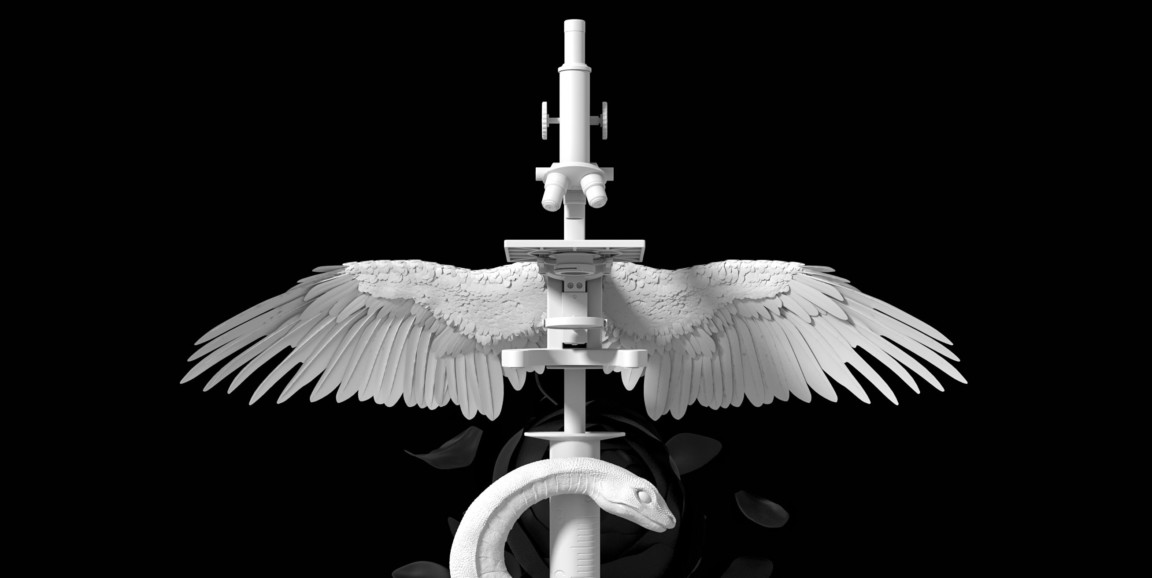Back in 2003, a change in the curriculum at the School of Medicine shifted its focus toward clinical training, and soon, basic science researchers like Nobel laureate Brian Kobilka, MD, and others noticed that fewer and fewer students were stopping by to inquire about doing research.
The progress of medical science depends on research and draws unique advantages from the work of physician-scientists -- doctors whose clinical work informs their lab work and vice versa. But even as Stanford medical students showed less interested in basic science research, across the United States, the number of physician-scientists was dropping, too. A 2014 report from the National Institutes of Health detailed the challenges to aspiring physician-scientists, which included longer training times and increasing educational debt.
In my story for the latest issue of Stanford Medicine magazine, I spoke with some of the faculty members who took it upon themselves to advocate for a change in the School of Medicine to a more flexible, affordable curriculum that would prioritize discovery.
Kobilka, a professor of molecular and cellular physiology and co-recipient of the 2012 Nobel Prize in chemistry, was among several of Stanford's Nobel laureates and esteemed faculty who were the early adopters for change. He said:
Stanford is a special place. It's a place where students can learn from and even participate in cutting-edge research when they're in medical school, partly because it's a great university, and because the basic science departments in the medical school and undergraduate campus are all contained in a very small geographic footprint. The inflexible curriculum made it difficult for students to take advantage of all that Stanford had to offer.
During the next few years, and with support from Lloyd Minor, MD, dean of the School of Medicine, the group grew to include more than 100 faculty, staff and students who spent three years reviewing the program.
As I describe in my story:
Their goal was twofold: first, create opportunities and flexibility for students' long-term research, personal growth, exploration and discovery; and second, improve the quality of coursework and teaching, which would include adding to the curriculum where opportunities were identified during the review process. The result was a new course of study, called the Discovery Curriculum, that supports both scientific discovery and self-discovery by offering innovative paths for learning and for scholarship.
The Discovery Curriculum was fully implemented in the 2018-2019 academic year. In addition to several new classes and funding opportunities, the curriculum allows an option for students to "split" their second year classwork over two years, to create time for long-term research projects or other pursuits. For the first cohort of students opting to split their second year -- which was about 10% of the class that started in the fall of 2017 -- it was an opportunity to pursue a variety of interests and projects without stepping away from classwork entirely, as some students had done in the past.
Second-year student William Shi saw the chance to split his second year as a "sneak preview" into his future career as a physician-scientist. He's been conducting research into improving diagnostic and monitoring tests for advanced prostate cancer patients, taking part in patient care by volunteering at Stanford's Cardinal Free Clinics, and taking care of his personal wellness. He's also advocating for his classmates, in part by leading the medical student mentorship program, which pairs incoming first-year medical students with older students.
Neil Gesundheit, MD, MPH, professor of endocrinology and senior associate dean for medical education, played an active role in the school's first major curriculum overhaul in 15 years. In his view, the work of basic and translational research that is fostered in the new curriculum is essential to the progress of medicine.
What we want our students to do is not to emulate us, but to eclipse us. We want them to gain skills and leadership, knowledge -- whatever they need -- to become the academicians and the thought leaders, the change agents for the future.
Illustration by Eddie Guy




